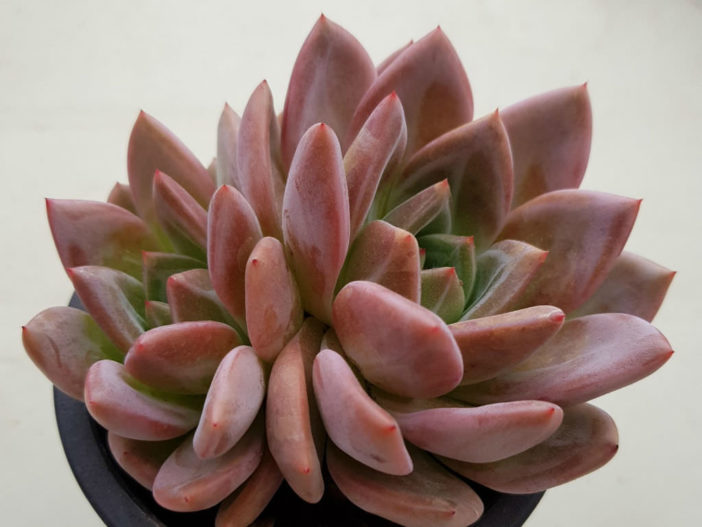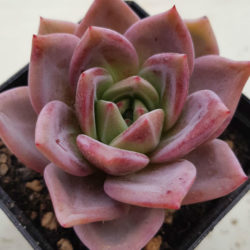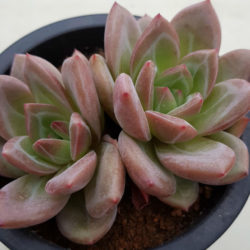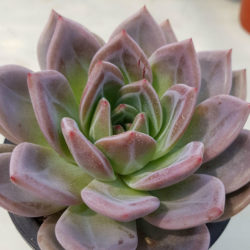Scientific Name
Echeveria 'Pink Champagne'
Scientific Classification
Family: Crassulaceae
Subfamily: Sempervivoideae
Tribe: Sedeae
Genus: Echeveria
Origin
Echeveria 'Pink Champagne' is hybridized and cloned by Hyun Sook Lee from Korea. The Champagne's are the best-selected forms of the hybridization between Echeveria agavoides 'Romeo' and Echeveria laui. There are five selected forms of Champagne: Red, Purple, Pink, Green, and White.
Description
Echeveria 'Pink Champagne' is a beautiful succulent that forms compact rosettes of pale blue-green to silvery-grey leaves with shades of pink. The slow-growing rosettes can reach up to 10 inches (25 cm) in diameter. The pointed leaves can grow up to 5 inches (12.5 cm) long and 1 inch (2.5 cm) wide.
The showy bright orange flowers are bell-shaped and appear on tall arching stalks, usually in late summer and fall.

Hardiness
USDA hardiness zone 9b to 11b: from 25 °F (−3.9 °C) to 50 °F (+10 °C).
How to Grow and Care
Most common Echeveria species are not complicated succulents to grow, provided you follow a few basic rules. First, be careful never to let water sit in the rosette as it can cause rot or fungal diseases that will kill the plant. Additionally, remove dead leaves from the bottom of the plant as it grows. These dead leaves provide a haven for pests, and Echeverias are susceptible to mealy bugs. Finally, as with all succulents, careful watering habits and plenty of light will help ensure success.
Most Echeveria can be easily propagated from leaf cuttings, although a few are better from seeds or stem cuttings. To propagate a leaf cutting, place the individual leaf in a succulent or cacti mix and cover the dish until the new plant sprouts.
Repot as needed, preferably during the warm season. To repot a succulent, ensure the soil is dry before repotting, then gently remove the pot. Knock away the old soil from the roots, removing any rotted or dead roots. Treat any cuts with a fungicide.
See more at How to Grow and Care for Echeveria.
Links
- Back to genus Echeveria
- Succupedia: Browse succulents by Scientific Name, Common Name, Genus, Family, USDA Hardiness Zone, Origin, or cacti by Genus
Photo Gallery
Click on a photo to see a larger version.


